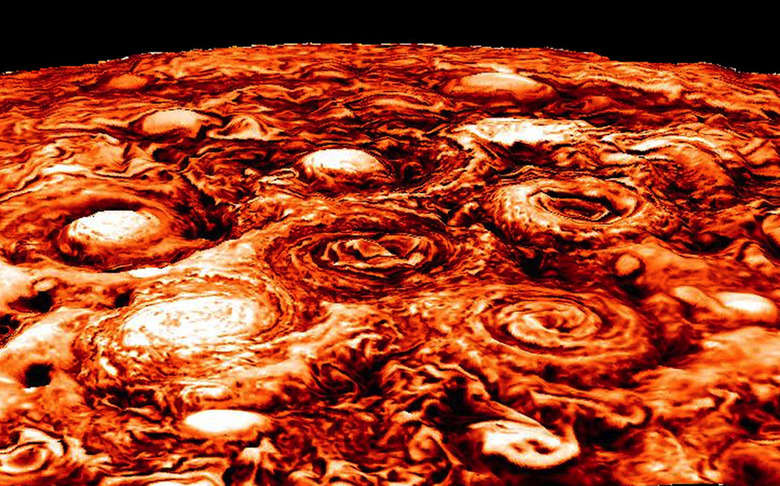NASA's Juno Probe Mapped Jupiter's Incredible Winds And The Images Are Just Nuts
Jupiter is the largest planet in our Solar System and NASA's Juno probe orbiting the gas giant has delivered some stunning images time and time again. NASA scientists used some of the probe's most recent infrared snapshots to map the planet's intense winds, and the resulting images are downright awesome.
These pictures, which were taken on Jupiter's north and south poles, reveal the massive wind towers that dominate not only its upper atmosphere but also stretch deep into the planet. As NASA explains, the jet streams that create the eye-catching patterns originate far below what we are able to see from its cloud tops, and the cyclones are unlike anything observed before in the Solar System, including here on Earth.
The weather systems that generate the huge storms and swirling torrents goes deeper than scientists had originally thought. The cyclones we see above stretch as deep as 1,900 miles into the planet. Obviously, this dwarfs anything we'd ever see here on Earth, and puts storm systems on every other planet in our Solar System to shame. These new findings are being published in a series in the journal Nature.

The "weather layer" of jupiter accounts for roughly one percent of the planet's total mass. That might not sound like much, but it's actually a greater ratio than that of Earth. "Earth's atmosphere is less than one millionth of the total mass of Earth," Yohai Kaspi, lead author of the research, explains. "The fact that Jupiter has such a massive region rotating in separate east-west bands is definitely a surprise."
These new discoveries were made possible thanks to Juno's high-tech equipment. Its infrared imaging hardware cuts through the cloud tops and captures the structure below, which has never been possible before. And as cool as this all is, the spacecraft is just getting started.
"These astonishing science results are yet another example of Jupiter's curve balls, and a testimony to the value of exploring the unknown from a new perspective with next-generation instruments," Scott Bolton, principal investigator of Juno, notes. "Juno is only about one third the way through its primary mission, and already we are seeing the beginnings of a new Jupiter."
